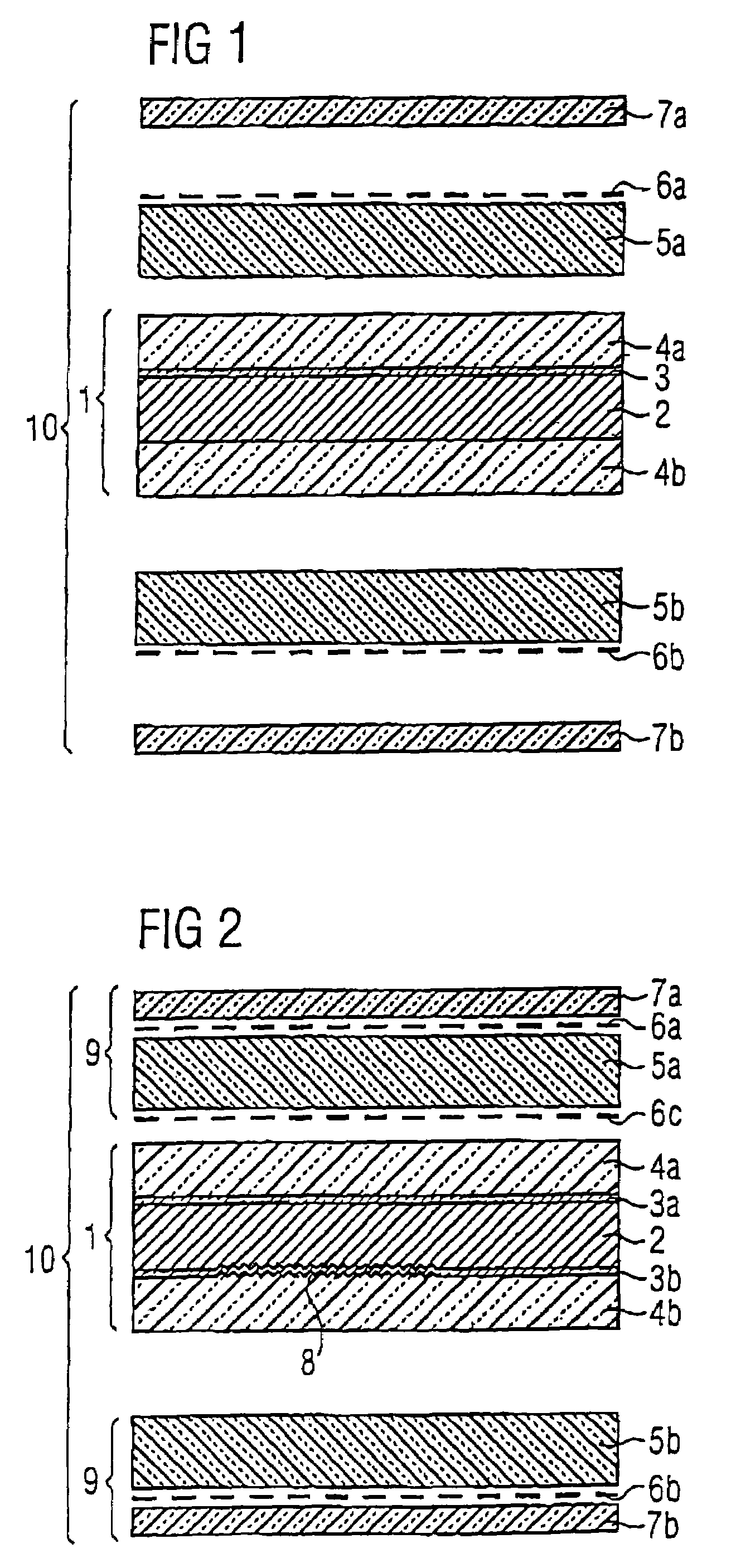Card laminate
a card and laminate technology, applied in the field of card laminates, can solve the problems of low rejection rate of expensive metallized foils, and achieve the effect of maximizing the 3d effect and great distance from the metal layer
- Summary
- Abstract
- Description
- Claims
- Application Information
AI Technical Summary
Benefits of technology
Problems solved by technology
Method used
Image
Examples
Embodiment Construction
[0026]FIG. 1 shows the layer arrangement of a card laminate schematically at a time before the layers are laminated together. The layers are laminated later into a uniform card laminate 10 by the application of pressure and temperature, here without the interposition of additional adhesive layers.
[0027]The layer structure comprises a central foil laminate 1 consisting of an interior plastic layer 2 made of polyester (PET) with two opposing sides and with a metal layer 3 on one of the opposing sides of the interior layer 2, and two transparent first plastic layers 4a, 4b made of PVC or PETG. Second plastic film layers 5a, 5b are laminated on each side of the two transparent plastic layers 4a, 4b, with at least the plastic film 5a being transparent so that the metal layer 3 is visible from outside through the plastic film 5a. Design prints 6a and 6b are applied to the exterior surfaces of the opposed sides of the plastic films 5a and 5b, respectively. The design print 6a is thus space...
PUM
 Login to View More
Login to View More Abstract
Description
Claims
Application Information
 Login to View More
Login to View More - R&D
- Intellectual Property
- Life Sciences
- Materials
- Tech Scout
- Unparalleled Data Quality
- Higher Quality Content
- 60% Fewer Hallucinations
Browse by: Latest US Patents, China's latest patents, Technical Efficacy Thesaurus, Application Domain, Technology Topic, Popular Technical Reports.
© 2025 PatSnap. All rights reserved.Legal|Privacy policy|Modern Slavery Act Transparency Statement|Sitemap|About US| Contact US: help@patsnap.com


